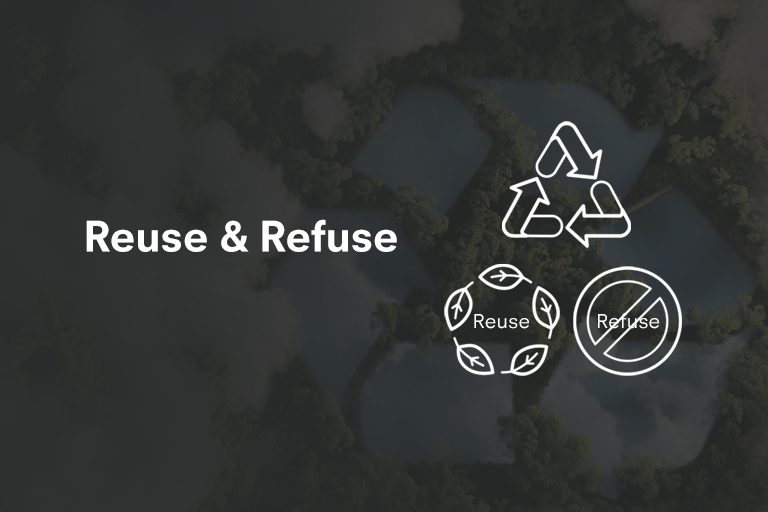Reuse and Refuse – Strate
Reusing and refusing are prominent topics these days, and many of us are already trying to be more environmentally conscious in our purchase and disposal decisions:
We might make more informed decisions about which things to buy based on the packaging’s capacity to be recycled.
– We may have rebalanced the amount of waste we put in the garbage can vs. the amount we toss away in the recycling bin.
– We may also have obtained a food scraps bin from the local authorities and be willing to cope with the inconvenience of emptying it!
Also Read: Top 5 Inspirational Designers of All Time
Refuse and refuse are two essential principles for reducing the number of items we use while also reducing the number of things we discard. Because there is a finite amount of room on Earth to dispose of our waste, it is critical to make optimal use of resources and produce less waste. Reuse and refuse play a crucial part in addressing the issues due to poor waste management practices.
Reuse
It’s worthwhile to invest in a few reusable goods. Some may appear to be more expensive than their disposable equivalents, but the cost will frequently average approximately the same in the long run. There are numerous choices available, including.
Also Read: Coping With Pandemic Stress & Exam Pressure – Essential Tips
– Fabric shopping bags to take the place of plastic shopping bags
– Cling film can be replaced with plastic or glass food containers.
– Beeswax wraps as a substitute for sandwich bags
– Metal straws to take the place of plastic straws
– Reusable water bottles and coffee mugs to avoid buying takeout — most stores will fill your container if needed.
Reuse is a technique or a habit of reusing something. This might be done to keep the product’s original function or give it a new one. Reusing a product more than once is suitable for us and the environment. Reusing also saves time, money, energy, and natural resources. Glass jars, for example, can be found in the kitchen. These jars are reused after they have been used once. After being used once, old books can be reused by others. If the book is a notebook, it can be used for reading, or the paper can be utilized for other reasons. Stop peeling the paper off gifts and use cloth gift bags instead. You can reuse the wrapping paper if you carefully remove it.
Also Read: New-Age Design Philosophies of Global Brands
Refuse
Refuse to purchase products from foreign nations or have traveled a long way. Instead, look for regional produce, go to your local farmers’ market, or look for small, locally owned companies.
Refuse to buy a product in many packaging or is only used once.
Wherever feasible, choose loose produce or produce with minimum recyclable packaging.
Refuse to take the easiest option, such as shopping at supermarkets.
Look for smaller, independent stores where you may fill your containers with dried items such as rice and pasta from enormous reusable storage bins.
When you’re away from home or dining out, refuse to drink from a bottle or can.
Bring your bottle of water or coffee cup to coffee shops, and order something from the tap at a bar or restaurant.
Whenever and wherever feasible, refuse. Choose non-plastic-wrapped things and bring your bags, containers, and utensils. The majority of your waste/trash will be eliminated if you refuse. “Why are we buying this?” or “Why do we need this?” is an excellent question to ask. For example, make a personal commitment to say “no” to plastic straws. Request “no straw, please” before ordering a drink, as plastics are not recyclable and are hazardous to the environment. As a result, refusing unnecessary items will not hurt us or the environment.
Also Read: Applications of Color Theory By Top Brands
In today’s world, waste has become a significant problem for both the environment and humanity. Our water bodies, grasslands, farms, and public areas are all impacted by the rubbish we throw away. It is critical to begin refusing and resuing at an early age. It’s vital to understand the difference between what we genuinely require and what we desire.
We at Strate are very concerned with this sustainability topic.
We are teaching our students to look into all the “dust to dust” chains while conceiving a product or a system (Dust to dust study is the total addition of energy and resources consumed to build, use and finally discard a product: from dust to dust).
We use the 17 sustainable development goals (SDGs) to evaluate our students’ work.
We are also pushing them to ask themselves the question, “do we need this?” every time they create something and try to think about low-tech when possible.
Also Read: Global Impact of COVID on Design Ecosystem
We are also exposing them to the way the circular economy works and how bio-mimicry can help us create value and business without creating wastes or wasting resources.
This actual generation of designers is the one that is going to re-conceive the world of tomorrow; giving them the good values to make it right is our duty.
Strate: making the world simpler, more just, and more Beautiful.



Want to Become a Designer ?
Strate is a unique design school that nurtures your talents as a designer by offering state-of-the art designing courses in Bangalore.
Join Strate